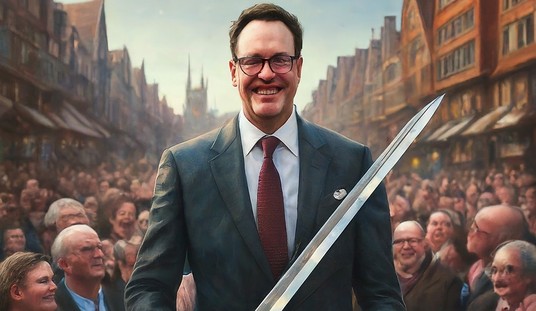Glenn Reynolds and Dr. Helen are both riffing on the phrase “fur children” to describe what you and I normally refer to as pets. Glenn writes:
I ran across this term — meaning pets you have instead of, you know, real children – a while back and was bothered. I mentioned it to a friend from DC, who remarked that it wasn’t uncommon to see women, and even men, on the street with a cat or small dog in a baby carrier.
Great science fiction plot: Hostile aliens infect humanity with a virus that causes us to lavish parental attention on animals instead of human offspring, as a means of extinguishing the human race without a messy invasion. But it’s just a science fiction plot. Isn’t it?
UPDATE: Stephen Carter emails:
I spotted your item today about “fur children”. In P. D. James’s novel The Children of Men, set in a world in which no children can be born, there are two scenes involving women caring for pets as if they were babies — not only walking them in strollers, but actually having them baptized — and the narrator tells us that this is common behavior. I suppose the symbolism (to say nothing of the psychology) was too complex to risk trying to put this in the film.
What’s funny is that behavior intended to symbolize an apocalyptic state has now become semi-normal.
In the Bay Area, I remember hearing the phrase “fur children” to describe pets as far back as 2000 — or maybe even the late 1990s. And it’s not at all a coincidence that while the number of “fur children” in the area may be rising, in 2005, AP wrote that “San Francisco has the smallest share of [human] small-fry of any major U.S. city”, adding, “Just 14.5 percent of the city’s population is 18 and under.” In linking to this column, James Taranto wrote:
The AP dispatch attributes the small number of children to high housing costs and Frisco’s high prevalence of nonprocreative sexual orientations. Not mentioned is the Roe effect.
Or as Mark Steyn put it back then in regards the bluest state of them all — the EU:
When I’ve mentioned the birth dearth on previous occasions, pro-abortion correspondents have insisted it’s due to other factors – the generally declining fertility rates that affect all materially prosperous societies, or the high taxes that make large families prohibitively expensive in materially prosperous societies. But this is a bit like arguing over which came first, the chicken or the egg — or, in this case, which came first, the lack of eggs or the scraggy old chicken-necked women desperate for one designer baby at the age of 48. How much of Europe’s fertility woes derive from abortion is debatable. But what should be obvious is that the way the abortion issue is framed – as a Blairite issue of personal choice — is itself symptomatic of the broader crisis of the dying West.
Since 1945, a multiplicity of government interventions – state pensions, subsidised higher education, higher taxes to pay for everything – has so ruptured traditional patterns of inter-generational solidarity that in Europe a child is now an optional lifestyle accessory. By 2050, Estonia’s population will have fallen by 52 per cent, Bulgaria’s by 36 per cent, Italy’s by 22 per cent. The hyper-rationalism of post-Christian Europe turns out to be wholly irrational: what’s the point of creating a secular utopia if it’s only for one generation?
To coin a phrase, it’s the demography, stupid.
Update: Insta-Steyn-lanche! Welcome Glenn Reynolds and Mark Steyn readers.










Join the conversation as a VIP Member